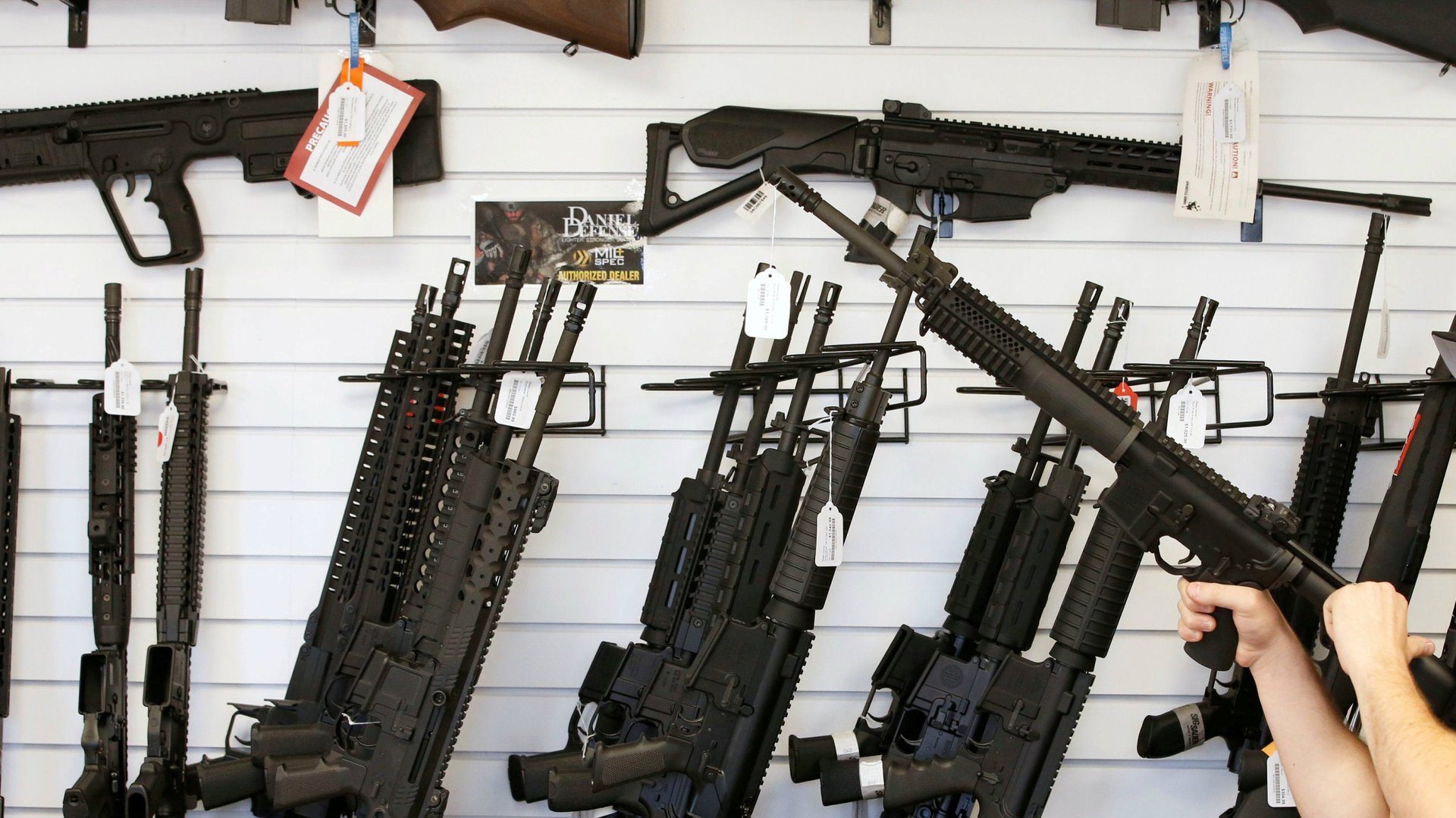America’s lax gun laws are giving more and more kids an easy path to suicide
In 2013, suicide surpassed homicide as the third leading cause of death for kids in the US, a ranking it has retained ever since.


In 2013, suicide surpassed homicide as the third leading cause of death for kids in the US, a ranking it has retained ever since.
The recession that began in 2007 is one reason suicide rates rose in the late 2000s and early 2010s. Guns are another. From 2002 to 2007, rates of firearm suicides among US kids were falling. But from 2007 to 2014, that figure increased 60% and is now the highest it has ever been, according to a study published recently in Pediatrics.
It’s not just kids. “The rise in firearm suicides among children reflects the more widespread problem of increased suicide rates across the nation, particularly following the economic recession in 2007,” Katherine Fowler, lead author of the study and behavioral scientist at the Center for Disease Control and Prevention told Quartz in an email. Fowler said rates of suicide in the US have increased for all age groups, both sexes, among military and Veteran populations, and in both rural and urban communities.
“It’s really stunning to see such a large increase in suicide rates affecting virtually every age group, Katherine Hempstead, senior adviser for health care at the Robert Wood Johnson Foundation, told the New York Times when broader US suicide rate data was released last year. Hempstead’s past research has identified a link between suicides among middle-aged US adults and rising rates of distress about jobs and finances.
Fowler’s data tracked suicides through 2014, and it’s possible that rates have fallen as the economy continues to recover. But many continue to feel the impact of the recession—including children. In particular, white and Native American children appear to be at risk; they were four to five times more likely to die by firearm suicide than the population as a whole.
Where the study had data that could identify a direct cause for firearm suicide, it found it was often related to relationship problems, including with a romantic partner, friend, or family member. Of course that’s not mutually exclusive to the economic issue. The economy made life significantly harder for huge swaths of America, and the stress of an unemployed parent or parents can pass through to their kids, and make a relationship problem feel that much more dire.
That said, many other countries suffered from the recession, and childhood suicide rates elsewhere haven’t risen at the same rates as they have in the US.
After a gunman opened fire on members of Congress at a baseball field near Washington DC on June 14, it reignited a common debate over guns, namely whether people need more guns to protect themselves from shooters or fewer guns to hurt fewer people. But countries with stricter gun laws don’t seem to suffer anywhere the same magnitude of gun-related injuries, death, or suicide as the US: 91% of global gun-related deaths for kids under 14 happen in the US, and gun homicide rates for 15-24 year-olds in the US are a startling 49 times higher than in other wealthy countries.
There was some good news in the Pediatrics study: firearm homicides for US kids declined between 2007 and 2014, which the CDC attributes to more programs and policies around preventing kids from killing each other. That’s little solace to the families and friends of the nearly 1,300 American children who die each year from firearm-related injuries, or the fact that 4.2% of all American kids have witnessed a fatal shooting in the US in the past year.
“About 19 children a day die or are medically treated in an emergency department for a gunshot wound in the US,” Fowler told Reuters. It doesn’t seem to have to be this way.